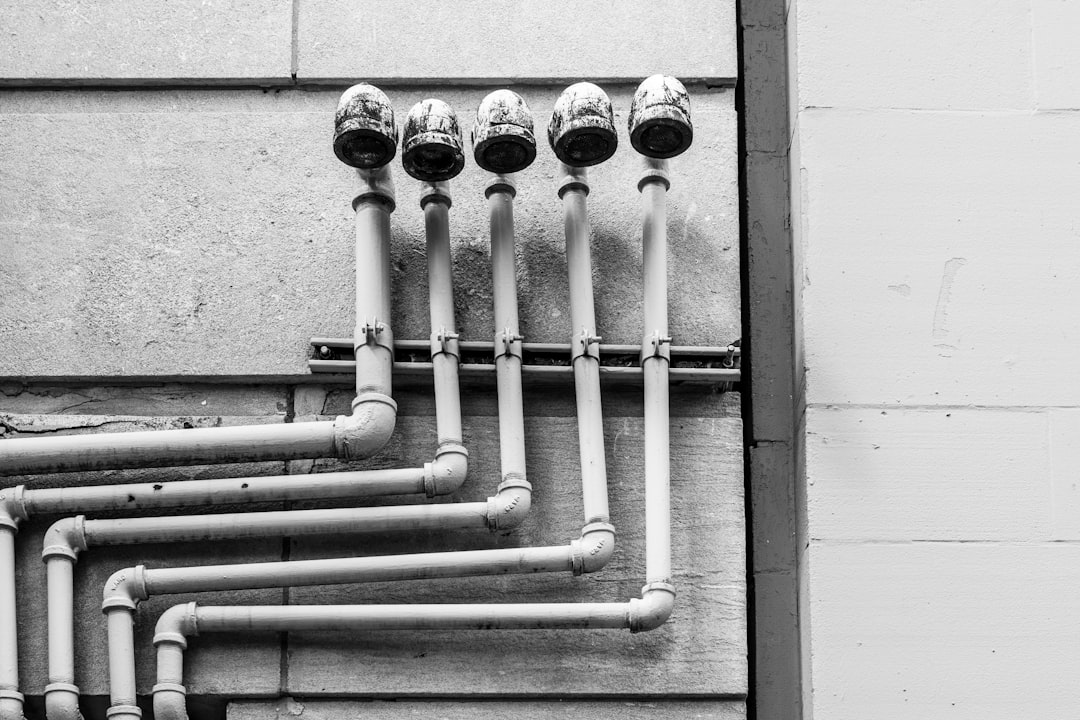In an era where smart homes are becoming smarter by the day, one of the last household systems to receive the digital treatment is the humble piping infrastructure. Envisioning a world where plumbing problems are caught, diagnosed, and perhaps even resolved autonomously, a new class of technology is slowly reshaping how we think about the simple act of water flowing through metal and plastic tubing. Enter the “Pipe Operating System” — an intelligent platform marrying sensors, AI, and automation to take proactive control of pipe maintenance and water management.
TLDR
The Pipe Operating System (Pipe OS) is an emerging smart technology designed to monitor, manage, and potentially fix household and commercial plumbing systems. It uses sensors, AI analytics, and remote repair mechanisms to prevent disasters like leaks or blockages before they occur. The system promises to lower maintenance costs, reduce water waste, and improve long-term pipe health. Think of it as a digital plumber that’s always on call.
Reinventing Plumbing Through Intelligence
Traditionally, plumbing has remained a reactive system — things break, and then we fix them. But what if the pipes themselves could anticipate failure? What if a system understood the physiology of water flow, the chemistry of corrosion, and the physics of pressure — and actively adapted to keep everything running smoothly? That’s the promise behind the Pipe Operating System.
Driven by breakthroughs in Internet of Things (IoT) sensors and machine learning, the Pipe OS monitors variables such as:
- Water pressure fluctuations
- Flow rates and patterns
- Temperature anomalies
- Sound frequency changes within the pipes
- pH and chemical content for corrosion and scaling prediction
By constantly analyzing this data, the system can identify early signs of leaks, clogs, or even microbial growth. In advanced implementations, it may even deploy nanoscale repair compounds or redirect flow to stabilize affected regions — some implementations call this “microplumbing”.

Behind the Scenes: How Pipe OS Works
At the heart of any Pipe Operating System lies a coordination of three main components:
- Sensor Network: Small, durable, and waterproof sensors are embedded along strategic points throughout the building’s piping. These collect real-time data on physical and chemical indicators.
- AI Analytics Engine: Cloud-based algorithms digest sensor readings, comparing them with a model of ‘healthy pipe behavior’ learned through thousands of other installations. Any deviant behavior triggers alerts or automated actions.
- Actuation Mechanisms: These range from remote shut-off valves to pressure modulators and can even include nano-robots for specific repair actions or chemical balancing.
All of these components work seamlessly under a user-friendly software interface, accessible by smartphone or desktop application. Maintenance logs, alerts, and predictions are clearly displayed to property owners or facility managers.
Features That Make Pipe OS Stand Out
Unlike traditional monitoring systems, the Pipe OS isn’t just about observation. Its design focuses on prevention and intervention. Here are some of the key functionalities that set it apart:
- Predictive Leak Detection: The OS predicts weak points where leaks are likely to develop due to pressure stress or corrosion.
- Smart Water Usage Insights: Tracks water consumption habits, compares them to norms, and identifies wasteful behavior for both homes and large facilities.
- Remote Shut-Off and Flow Control: In case of emergency, users (or the system itself) can remotely shut off specific pipe segments.
- Self-Healing Materials: Some experimental systems deploy polymers or smart gels that automatically seal pinhole leaks when detected.
- AI-Driven Maintenance Recommendations: Offers smart suggestions for pipe replacement timing, filter changes, or descaling needs.
Real-World Applications and Use Cases
While this technology may sound futuristic, it’s already being tested and implemented in various settings:
In Private Homes
Early adopters of Pipe OS technology are using it to safeguard against costly water damage. Smart homes equipped with these systems often receive lower insurance premiums due to reduced risk exposure.
Commercial Buildings
Office complexes, hotels, and shopping malls leverage Pipe OS for scalable plumbing management. With multiple floors and intricate pipe layouts, automated monitoring becomes almost essential to reduce downtimes and repair costs.
Municipal Infrastructure
City councils and water management authorities are piloting similar technologies to predict bursting of aging water mains, conserving millions of gallons of water annually.

Challenges and Considerations
Despite its promise, the Pipe Operating System isn’t without challenges. Some major considerations include:
- Cost of Installation: The initial investment can run high, especially in retrofit scenarios involving older piping infrastructure.
- Data Privacy: As with every smart system, ensuring the privacy and security of collected data is critical.
- System Reliability: Redundancy measures are required to ensure the AI doesn’t misdiagnose an anomaly — which could lead to unnecessary shutdowns or overlooked risks.
- Integration Complexity: Compatibility with existing smart home or property management systems is still evolving.
Despite these issues, the pace of innovation continues. Experts believe that much like how smart thermostats have become standard, Pipe OS systems will soon be just as ubiquitous — especially in disaster-prone or water-stressed regions.
Future Horizons: Could It Really Fix Your Pipes?
The most tantalizing aspect of the Pipe OS lies in its potential to blur the line between monitoring and maintenance. Engineers are already developing ways for pipe interiors to be coated with responsive materials that heal when damaged. One experimental design integrates carbon nanotube linings capable of strengthening weak pipe sections upon exposure to high pressure.
Another approach uses autonomous drones or micro-bots introduced through valves — a nod to endoscopic surgery technology, but for pipes. These bots patrol for debris or corrosion and can administer corrective actions before any serious issues develop.
In the next decade, we may witness plumbing crews working alongside AI systems that not only detect issues but also pre-emptively resolve them before a human team even shows up. Think of it as the equivalent of antivirus software – but for your water system.
The Bottom Line
The Pipe Operating System is not just a tech trend — it’s a potential revolution in how we manage one of civilization’s most critical but overlooked systems. By moving from reactive repair models to a proactive and intelligent infrastructure, buildings can become smarter, safer, and significantly more efficient.
As we continue to integrate AI into every facet of modern life, the idea of a pipe diagnosing its own problem — and quietly fixing it — doesn’t just sound impressive. It sounds inevitable.

![How to Disable Google Smart Lock [Android/Chrome] how-to-disable-google-smart-lock-android-chrome](https://reviewslion.com/wp-content/uploads/2023/12/how-to-disable-google-smart-lock-android-chrome-200x150.jpg)

Leave a Reply